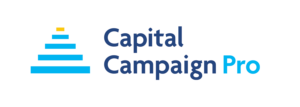The Three Most Powerful Capital Campaign Strategies

Capital campaigns are the most effective form of fundraising. Organizations often raise ten times what they raise every year — without cannibalizing that important annual fundraising lifeline.
I’ve written books and posts and literally hundreds of thousands of words about campaigns — how to do them and why they work!
But today, I’m going to boil it all down to the three most powerful strategies that make capital campaigns work.
While obviously there’s much more to think about, if you keep these three strategies front and center in your mind, chances are decent that you’ll succeed.
Strategy One: A Compelling Case for Support
For a successful campaign, you must be raising money for something that will move your organization to a higher level of service.
Just needing more money isn’t a compelling case! You’ve got to figure out what you should invest in that will make a big difference in the services you provide. And you’ve got to be able to articulate in compelling terms why that matters to the people you serve.
This may sound simple, but in my experience, many organizations know they need more money but have a devil of a time deciding just where they should invest and what the impact will be.
If your case for support is boring or ho-hum. If it doesn’t excite your donors, your campaign will be lackluster.
Strategy Two: The Gift Range Chart — Your Campaign Roadmap
If you create a gift range chart that is right for your organization and you are disciplined about using it as the road map for your campaign, many other things will become clear.
A gift range chart is a simple chart that shows the number of gifts at each level you will need to reach your campaign goal. This chart is a mix of formula and reality. The formula is loosely based on the 80-20 rule:
Loosely stated, 80% of the goal will come from 20% of the donors.
The lead gift should be between 20% and 30% of your campaign goal. At each lower level, the amount of the gift should decrease, and the number of gifts should increase. Your chart should make simple sense.
The gift amounts and numbers won’t directly reflect your donor base, when looked at in its entirety, it’s got to reflect the size of your current prospect base.
How to Test Your Gift Range Chart
The test is simple. Add up the total number of gifts needed according to your gift range chart, multiply it by 3. If the resulting amount greatly exceeds the number of prospects and donors in your system, you’ll have to recalculate your chart.
Why multiply by 3? Because on average, you will need three prospects for every gift. So, if your chart shows that you need 500 gifts to get to your goal, you can assume you’ll need approximately 1,500 active prospects. And if your entire prospect list only has 600 names, you’ll have to redo your chart, starting with a higher top gift level.
Develop Plans Using Your Gift Range Chart
Once you have a chart that is right for your campaign and your organization, you can use it to create your plan for many aspects of your campaign. Simply divide the chart into three sections (top, middle and bottom) and then create a plan for each of these aspects of your campaign for each level:
- How gifts will be solicited?
- What staff member will handle which prospects?
- How will you recognize and steward donors?
- The order of solicitation?
- Lastly, your campaign timeline.
A plan based on your gift range chart will focus your attention and your work in a way that will make your campaign succeed.
Strategy Three: Involve Prospective Donors
We know that people who are actively involved in a project are much more likely to give to it and give generously. Again and again, when we look at the results of successful campaigns, the percent of gifts made by people who have been involved is startlingly high. So, you should develop ways to involve prospective donors in your planning process and your campaign.
The most effective ways to involve people is through short term, specific assignments. Here are just a few of the aspects of the campaign that lend themselves to involving people:
- Helping with the site search and selection.
- Reviewing architectural plans.
- Reviewing the case for support.
- Advising on the feasibility study.
- Developing and reviewing the campaign plan.
- Lead gift solicitation during the quiet phase.
- Planning the campaign kick-off.
- Helping with the community campaign and campaign celebration.
It may seem that involving volunteers in the campaign will be more work than it’s worth, but if the work groups or committees are well-organized with clear objectives and timetables, you’ll find that it will pay off. Not only will people feel more engaged in your campaign, but they can actually help in constructive ways.
So don’t fall into the trap of thinking that you can and should do it all yourself. A campaign provides wonderful opportunities to engage people in your campaign.
Three Capital Campaign Strategies that Work
In summary, if you:
- Have a compelling case for support;
- Use a gift range chart as the roadmap for your campaign;
- And go the extra mile to engage prospective donors.
If you do all three of those things, the chances are good that you’ll have a successful capital campaign. Still, you’ll likely need some help along the way. That’s what we’re here for. 😉
Get the support you need to succeed.
With our approach, you get the support, expertise, and guidance you need — plus all the tools and materials — to make your campaign a success.



Leave a Comment